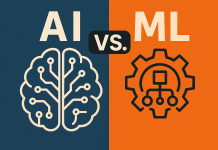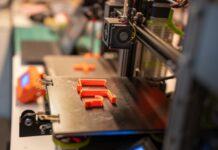Have you ever gazed into the distance and wondered what’s on the horizon for web design? I know I have. It seems like it was only yesterday that we thought we had seen it all. Now though, things are moving quickly toward a new reality. Everything is constantly changing, and web design isn’t an exception.
Technology is at the forefront of determining how web design will look. A website layout determines how individuals interact with it. The following article covers some of the technology that will influence web design.
Let’s get into the intricate details.
1. Artificial Intelligence and Machine Learning
Artificial Intelligence (AI) is a field of computer science that studies how to make computers act like humans. AI is one of the most integral parts of web design. It’s used in web design to create more immersive, personalized, and interactive user experiences.
Both AI and machine learning (ML) can learn from user engagements about what they prefer. Thus, they can make adjustments to ensure users have the best experience.
Both individuals and organizations in the web design industry are trying out different techniques to meet users’ needs. In fact, most web design and development NYC companies incorporate AI and machine learning when designing websites.
They are always on the lookout for the latest technology to ensure their customers keep up with the latest trends. It doesn’t matter the industry you are in. An up-to-date website is vital for a fantastic user experience.
AI and machine learning also allow for a website to function more clearly. They enhance website appearance, improve interaction with visitors, organize and manage inventory better, and strengthen website search abilities.
You can use AI for voice recognition or facial recognition. It could help your website recognize who you are when you visit it on your phone or desktop computer. It will then tailor the content of that page specifically to you.
2. Virtual Reality and Augmented Reality
Web developers and designers no longer design static, flat sites that present information statically. Instead, they are creating experiences that engage users. The content also encourages them to explore or interact with the content.
Augmented reality enables individuals to place a device between themselves and the real world before them. Virtual reality (VR) allows individuals to interact with simulated objects and experiences.
VR allows web designers to create immersive and interactive websites. Thus users can experience content on a whole new level. Businesses can benefit from using AR and VR on their websites by creating interactive content and boosting engagement rates.
Web VR allows users from a website to experience virtual reality in their browser. You could browse websites and get to try stuff. You could also see yourself from a 3D perspective. Other activities you can participate in include virtually test driving a car or trying on new clothes.
With VR and AR technology becoming more accessible every day, soon enough, all you’ll need is an app on your phone or headset to access an entirely new world of possibilities for web design!
3. Internet of Things
The Internet of Things (IoT) is a network of physical devices that includes vehicles and home appliances. Other electronics, software, sensors, and network connectivity items are parts of it. It enables these objects to connect and exchange data.
Each thing is uniquely identifiable through its embedded computing system, however, it can interoperate within the existing Internet infrastructure. Websites designers will have to design websites with IoT in mind. Inertenent of things helps in creating a robust backend for websites. It also plays other crucial roles like:
- Improving the web speed
- Promote dynamic user interface
- Improves privacy and security
- Allows chatbot integration
- Enables efficient data transmission.
Most people rely on an intermediary device to browse the web. With IoT, it will be easy to connect a device without interfering with the end-user experience.
4. Progressive Web Apps
Progressive Web Apps (PWAs) are a new way of thinking about web design. They combine the best parts of mobile apps and websites. They offer better performance and reliability than native apps.
PWAs are essentially web pages that behave like native applications. They load quickly, work offline, and are easy to install on your home screen. Also, they can send push notifications like regular apps.
PWA technology;
- Enables seamless installation of the web
- Smooth maintenance and updating
- Less support and development expenses
5. Voice Search and AI Chatbots
Voice search optimization is one of the top web development trends. You have to include it in your technical SEO strategy to stay ahead of the competition. You can integrate voice search technology into a web application through a web speech API.
The API has two features which are speech recognition and speech synthesis. Speech synthesis enables a script to read text content. Speech recognition works with voice context and also responds to queries.
AI chatbots will be matching users’ behaviors through machine learning, natural language processing, and data retrieval methods. AI chatbots enhance user experience. They do this by:
- Answering queries fast
- Accumulate information
- Fixing problems
Doing all this ensures a smooth digital experience
6. Motion UI
Motion UI is a technique that uses motion and animation to create a more engaging user experience. You can use the Motion UI tool to make your website or application more intuitive and interactive, visually appealing, or both.
Motion UI is often used in conjunction with parallax scrolling. It allows for the background of a page to scroll at different speeds than the foreground elements on the page. Motion UI can also be combined with other visual effects like animation, transitions, and hover states to create an overall immersive experience for web users.
Final Thoughts
The future is bright for web design. Artificial Intelligence (AI), Machine learning, motion UI, and Virtual and augmented reality (VR and AR) are some technologies that will disrupt the sector.
There’s a lot to look forward to. We believe that these technologies will push us even further into an era of inclusivity, accessibility, and user-friendliness. There’s nothing more exciting than that.








